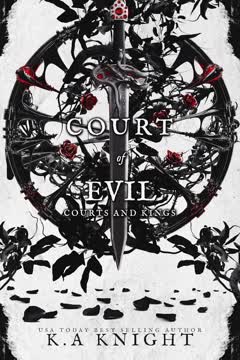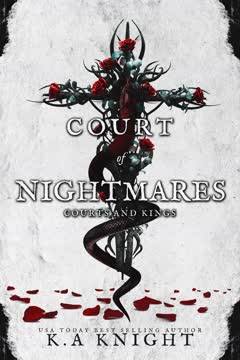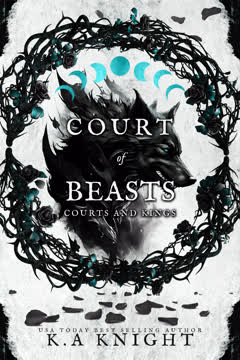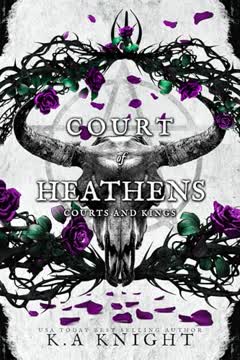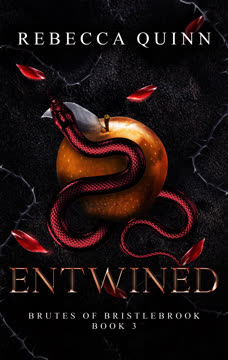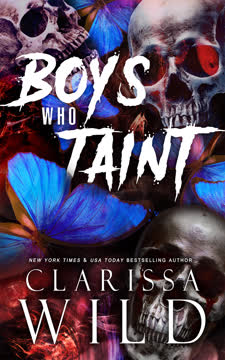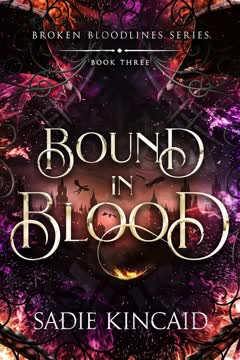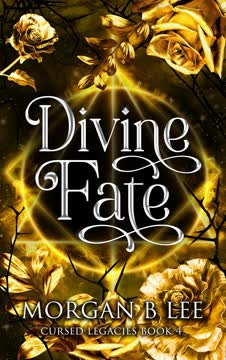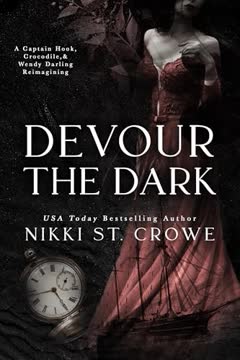Plot Summary
Betrayal in the Blood
Tate Havelock, a skilled hunter, is betrayed by her own elite unit—men she considered family. Imprisoned and tortured for refusing to condone their descent into cruelty, Tate's world shatters. The men she trusted have become monsters, killing innocents under the guise of duty. Her body broken, her spirit burning with vengeance, Tate vows to become the very evil she once hunted, determined to cleanse her house of corruption. This is the moment her journey from loyal soldier to avenging monster begins, setting the stage for a war not just against monsters, but against the darkness within her own kind.
The Hunter's Arrival
Years earlier, Tate arrives at Stalkers' Rest, the legendary hunter base, determined to prove herself in a male-dominated world. She faces immediate hostility and sexism, but quickly earns respect by besting her would-be tormentors. Her skills and unorthodox methods catch the eye of Commander Shamus Vilaran, who places her in Major Black's elite unit. Tate's presence is both a challenge and a catalyst, as she navigates the treacherous politics and brutal expectations of the hunter hierarchy, forging her own path with grit, wit, and a refusal to back down.
Earning the Elite
Tate's induction into Black's unit is a trial by fire. She must fight for every scrap of respect, enduring hazing and skepticism. Over time, her relentless competence and courage win over her teammates, transforming the group into a found family. Yet beneath the camaraderie, darkness festers—Black's methods grow crueler, and the line between justice and sadism blurs. Tate's loyalty is tested as she witnesses the team's willingness to cross moral boundaries, foreshadowing the betrayal to come.
Four Years of Brotherhood
Years pass, and Tate becomes an integral part of the elite unit. Together, they face supernatural threats no one else can handle, earning a reputation for ruthlessness and success. The team's bond deepens, but so does their isolation from the rest of the world. Tate finds a sense of belonging she never expected, even as she hides her own secrets and growing doubts about the team's methods. The unit's fame and Black's power swell, setting the stage for a catastrophic fall.
The Monster Within
On a mission to clear a vampire nest, Tate uncovers the horrifying truth: her team has been torturing and killing innocents for sport. The revelation is shattering—her brothers in arms are monsters in human skin. When she confronts them, they turn on her, branding her a traitor and subjecting her to brutal torture. Tate's world collapses, and she is left for dead, her faith in family and justice destroyed. This crucible of pain transforms her, forging a new resolve to fight evil with evil.
The Truth Revealed
Broken but unbowed, Tate endures unspeakable torment at the hands of her former team. Refusing to break, she escapes with the help of Commander Shamus and his ghostly ally, Ronan. Fleeing to the fae realm, she is healed by ancient magic, but the experience leaves her changed—physically and spiritually. The fae queen extracts a mysterious price, binding Tate to a new destiny. She emerges from the ordeal with a singular purpose: to hunt down the corruption within the hunters and reclaim her soul.
Torture and Defiance
Tate's captivity is a crucible of agony and humiliation. Her team seeks to break her body and spirit, but she clings to her identity and defiance. Even as they strip away her weapons, her hair, and her dignity, Tate refuses to yield. The torture becomes a dark rebirth, burning away her old self and leaving only the will to survive and destroy those who betrayed her. Her escape is a testament to her resilience, and her vow to become a monster to fight monsters marks a point of no return.
Escape and Fae Bargain
Near death, Tate is rescued by Shamus and Ronan, who spirit her into the fae realm. There, she bargains with the fae queen for healing, accepting a mysterious debt in exchange for her life. The fae's magic restores her body but leaves her with new powers and obligations. Tate's brush with death and the supernatural deepens her understanding of the world's complexities, and she emerges with a new sense of purpose—and a growing circle of unlikely allies.
Healing in the Fae Realm
As Tate recovers in the fae realm, she experiences visions of her ancestors—powerful women who urge her to embrace her strength and anger. She learns that her bloodline is tied to ancient magic, and that her destiny is greater than vengeance. The fae queen's interest in her hints at a larger role to play in the balance between humans and monsters. Tate's healing is not just physical, but spiritual, as she begins to accept the darkness within herself as a source of power.
The Fae's Price
To repay her debt to the fae, Tate is tasked with freeing a powerful, tormented fae prince from a mental prison. The process is harrowing, forcing her to confront her own pain and the nature of evil. By offering her blood and empathy, she tames the prince's madness and binds him to her service. This act cements her role as a bridge between worlds, and her growing retinue of supernatural allies—each with their own darkness—becomes the foundation of her new "court."
The Tempest Unleashed
Tate's journey leads her to awaken a tempest—an ancient, destructive being who can only be controlled by a worthy master. Through a ritual of blood and pain, she binds the tempest to her, gaining a powerful protector and companion. As she gathers more outcasts—a warlock, a succubus, a ghost, and others—her "Court of Evil" takes shape. Each member is broken in their own way, but together they form a found family bound by loyalty, vengeance, and the shared goal of cleansing the world of true evil.
The Court of Monsters
With her new team, Tate begins a campaign to root out corruption within the hunters. They take on missions no one else can, using their unique powers and moral code to protect innocents—human and monster alike. Along the way, they rescue a warlock from torture, help a succubus avenge her brother, and offer sanctuary to the lost and broken. Their reputation grows, and so does the threat from those who fear change. Tate's leadership is tested as she balances justice, mercy, and the darkness within her own heart.
The Warlock's Chains
The Court's next mission is to save a warlock being drained of his magic by corrupt hunters. The rescue is brutal, exposing the depths of depravity within the organization. Tate's willingness to kill her own kind for the sake of justice cements her reputation as both a savior and a monster. The warlock, Jarek, joins the Court, bringing his own scars and powers. The team's dynamic deepens, as each member finds healing and purpose in the shared fight against evil.
The Succubus' Vengeance
The Court intervenes to save a succubus, Fang, and her brother from a human predator. The brother's death and Fang's subsequent revenge are raw and cathartic, highlighting the cost of violence and the need for justice. Fang's integration into the Court brings new strength and vulnerability, and her relationship with Tate becomes a source of healing for them both. The team's willingness to embrace broken souls sets them apart from the rigid, judgmental hunters.
The Gathering of Broken Souls
As the Court grows, each member's trauma and pain are acknowledged and transformed into strength. Tate's leadership is both fierce and compassionate, and her willingness to love and be loved—by men, women, and monsters—creates a bond that cannot be broken. Together, they face new threats, including the resurrection of her old team as undead ghouls, and the looming war within the hunters. The Court's unity and diversity become their greatest weapon.
The Court of Evil Rises
Tate and her Court systematically hunt down the corrupt hunters, culminating in a brutal showdown with her former team. The battle is bloody and personal, with each member of the Court confronting their own demons. Tate's victory is both triumphant and bittersweet—her revenge is complete, but the cost is high. The Court's actions inspire others to rise up, and the seeds of a new order are sown.
The Hunter's Reckoning
The remaining corrupt hunters launch an all-out assault on Stalkers' Rest, seeking to destroy Tate and her allies. The siege is a test of everything the Court has built—trust, power, and the willingness to fight for a better world. Tate's leadership shines as she rallies the defenders, inspires loyalty, and unleashes the full might of her monstrous family. The battle is fierce, but the Court's unity and strength turn the tide.
The Siege of Stalkers' Rest
As the battle rages, Tate's vision of the future comes to pass—hunters turning on hunters, monsters fighting alongside humans, and the fate of the organization hanging in the balance. The Court's powers and bonds are pushed to the limit, and sacrifices are made. In the end, Tate's willingness to embrace both her humanity and her monstrosity allows her to prevail, but the victory is not without loss.
The Last Stand
With the corrupt hunters defeated, Tate and Shamus set about rebuilding Stalkers' Rest and the hunter organization. They honor the fallen, offer amnesty to those who wish to leave, and establish new rules based on justice and compassion. The Court of Evil becomes a symbol of hope and change, and Tate's leadership is recognized by friend and foe alike. The wounds of the past begin to heal, and a new era dawns.
The Treaty of Queens
Recognizing that true safety requires cooperation, Tate gathers the leaders of the monster courts—wolves, vampires, fae, necromancers, and more—to forge a historic treaty. The "Court of Queens" is born, binding the supernatural world and the hunters in a pact of mutual protection and respect. The ceremony is both magical and political, sealing the promise of a better future. Tate's journey from betrayed hunter to queen of monsters is complete, but the fight for peace and justice continues, as new threats and challenges await.
Characters
Tate Havelock
Tate is a fiercely skilled hunter whose journey from loyal soldier to avenging monster forms the heart of the story. Betrayed by her own team, she endures torture and loss, emerging with a new purpose: to cleanse her world of corruption. Tate's strength lies in her resilience, compassion, and willingness to embrace both light and darkness. Her relationships—with Shamus, her monstrous Court, and her own past—are complex and evolving. Psychoanalytically, Tate embodies the struggle between justice and vengeance, trust and betrayal, and the search for belonging. Her arc is one of transformation, as she learns to lead, love, and accept the monster within.
Shamus Vilaran
Shamus is the enigmatic leader of Stalkers' Rest, a man haunted by loss and driven by duty. He recognizes Tate's potential and becomes her unlikely ally, rescuing her from death and guiding her toward her destiny. Shamus's own secrets—his supernatural nature, his ghostly companion Ronan, and his willingness to break rules for the greater good—make him both a protector and a partner. His relationship with Tate is marked by mutual respect, desire, and the shared burden of leadership. Psychologically, Shamus represents the tension between tradition and change, and the cost of power.
Major Black
Black is Tate's former commander and the architect of her betrayal. Once a respected hunter, his descent into cruelty and sadism mirrors the organization's corruption. Black's charisma masks a deep insecurity and hunger for control, and his willingness to become a literal monster is both tragic and terrifying. His relationship with Tate is one of twisted mentorship and rivalry, culminating in a brutal reckoning. Black embodies the dangers of unchecked power and the ease with which good men become evil.
Ronan
Ronan is Shamus's best friend and ghostly companion, bound to him by fate and magic. He serves as a protector, spy, and comic relief, but his own longing for connection and redemption adds depth to his character. Ronan's relationship with Tate evolves from distant observer to trusted ally and lover, reflecting the story's themes of loyalty, loss, and the search for meaning beyond death.
Zeev (The Fae Prince)
Zeev is a powerful, ancient fae prince, trapped in his own mind until Tate frees him. His madness and hunger are both a danger and a source of strength, and his bond with Tate is forged through pain, blood, and mutual understanding. Zeev's relationship with the Court is volatile, but his loyalty to Tate is absolute. Psychologically, he represents the allure and peril of embracing one's darkness, and the possibility of redemption through connection.
Tem (The Tempest)
Tem is an ancient tempest, a being of chaos and destruction who can only be controlled by a worthy master. Tate's willingness to endure pain and offer compassion tames him, and he becomes her most loyal protector. Tem's childlike devotion and immense power make him both endearing and terrifying. His journey is one of self-discovery, as he learns to choose his own path and find family among the broken.
Jarek (The Warlock)
Jarek is a warlock rescued by the Court from torture and exploitation. His magic and intelligence are invaluable, but his trauma and guilt weigh heavily on him. Jarek's relationship with Tate and the others is built on trust and shared pain, and his arc is one of healing and redemption. He represents the cost of power and the importance of compassion in a world of violence.
Fang (The Succubus)
Fang is a succubus saved by the Court after the loss of her brother. Her journey from victim to avenger is raw and emotional, and her relationship with Tate is both romantic and healing. Fang's powers and vulnerability add depth to the team, and her willingness to love and be loved is a testament to the story's themes of found family and resilience.
Addeus (The Machine Vampire)
Addeus is a vampyr-machine hybrid, created and abandoned by those who sought to use him. His struggle with madness, hunger, and identity is central to his arc, and his loyalty to Tate is unwavering. Addeus's presence challenges the boundaries between human and monster, and his journey is one of acceptance and purpose.
The Court of Evil (The Team)
The Court is more than the sum of its parts—a family of outcasts, monsters, and survivors who find strength in each other. Their relationships are marked by loyalty, love, and the willingness to fight for a better world. Each member brings unique powers and perspectives, and together they embody the story's message: that true strength lies in embracing both light and darkness, and that family is chosen, not given.
Plot Devices
Duality of Monster and Human
The narrative constantly challenges the distinction between monster and human, using Tate's journey and the Court's composition to explore the nature of evil. Betrayal by humans, compassion from monsters, and the willingness to embrace darkness for the sake of justice all serve to complicate traditional morality. This device is reinforced through foreshadowing (Tate's visions, the fae's prophecies), parallel arcs (hunters becoming monsters, monsters becoming heroes), and the recurring motif of blood as both curse and bond.
Found Family and Chosen Loyalty
The Court of Evil is assembled from outcasts and survivors, each with their own trauma and scars. The narrative structure uses their individual arcs to build a collective identity, emphasizing the power of chosen family over blood ties. The team's loyalty is tested and reaffirmed through trials, battles, and moments of vulnerability, creating a sense of unity that contrasts with the fractured, corrupt hunters.
Power, Consent, and Transformation
The story's supernatural elements—fae bargains, blood bonds, magical rituals—serve as metaphors for power, consent, and transformation. Tate's willingness to endure pain, make deals, and share her soul is both a source of strength and a risk. The narrative uses these devices to explore themes of autonomy, sacrifice, and the cost of change, often foreshadowing future consequences through visions and prophecies.
War as Cleansing and Rebirth
The climactic battles—against the corrupt hunters, the siege of Stalkers' Rest, and the final war—are not just about survival, but about remaking the world. The narrative structure uses these conflicts to strip away the old order and make room for something new. The aftermath is as important as the fight itself, with emphasis on healing, rebuilding, and forging new alliances.
The Treaty of Queens
The formation of the Court of Queens and the signing of the treaty is the culmination of the story's themes. It represents the possibility of peace through cooperation, the power of women's leadership, and the importance of bridging divides. The device of the blood-bound contract, witnessed by gods and monsters alike, serves as both a literal and symbolic foundation for the new world Tate and her allies are building.
Analysis
Court of Evil is a dark, visceral exploration of power, trauma, and the possibility of redemption. At its core, the novel asks what it means to be a monster—and whether monstrosity is defined by nature, choice, or circumstance. Through Tate's journey from betrayed hunter to queen of monsters, the story dismantles binaries of good and evil, human and other, showing that true strength lies in embracing complexity and forging one's own path. The narrative is unflinching in its depiction of violence, pain, and the cost of survival, but it is equally committed to the healing power of found family, love, and loyalty. The Court of Evil is both a literal and metaphorical home for the broken, a testament to the idea that those who have suffered most can become the fiercest protectors. The novel's ultimate message is one of hope: that even in a world scarred by betrayal and bloodshed, it is possible to build something new—through courage, compassion, and the willingness to fight for a better future. The Treaty of Queens is not just a political alliance, but a promise that the cycle of violence can be broken, and that unity across difference is the true source of power.
Last updated:
Review Summary
Court of Evil by K.A. Knight is the final book in the Courts & Kings series. Readers praise the strong female lead, Tate, and her diverse group of monster love interests. The book features intense action, steamy romance, and a revenge plot. Many reviewers enjoyed the character development, world-building, and humor. Some highlighted the unexpected FF element. While most gave high ratings, a few felt the relationships lacked depth. Overall, fans of paranormal reverse harem romance found it a satisfying conclusion to the series.
